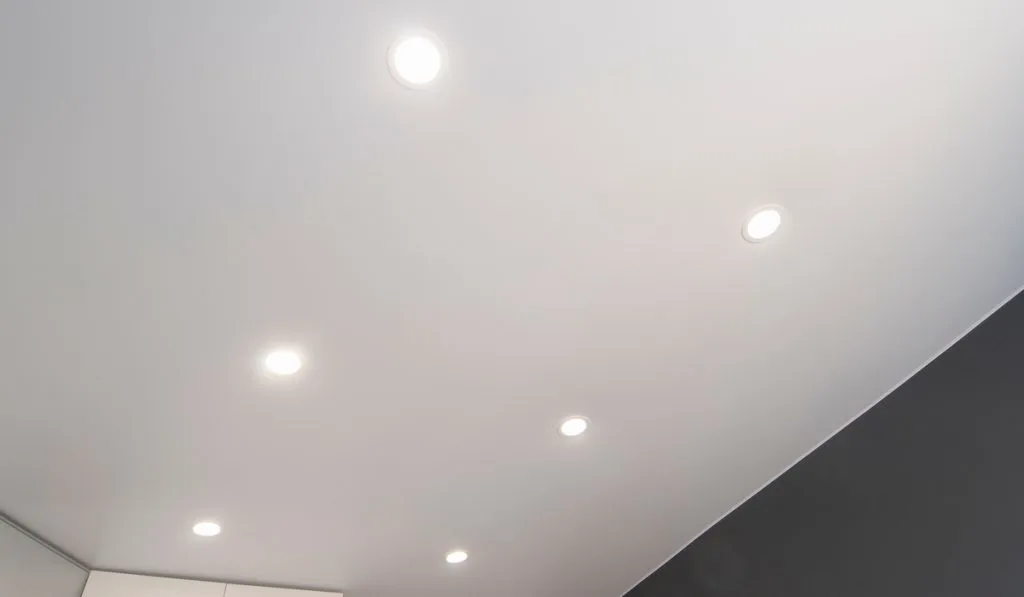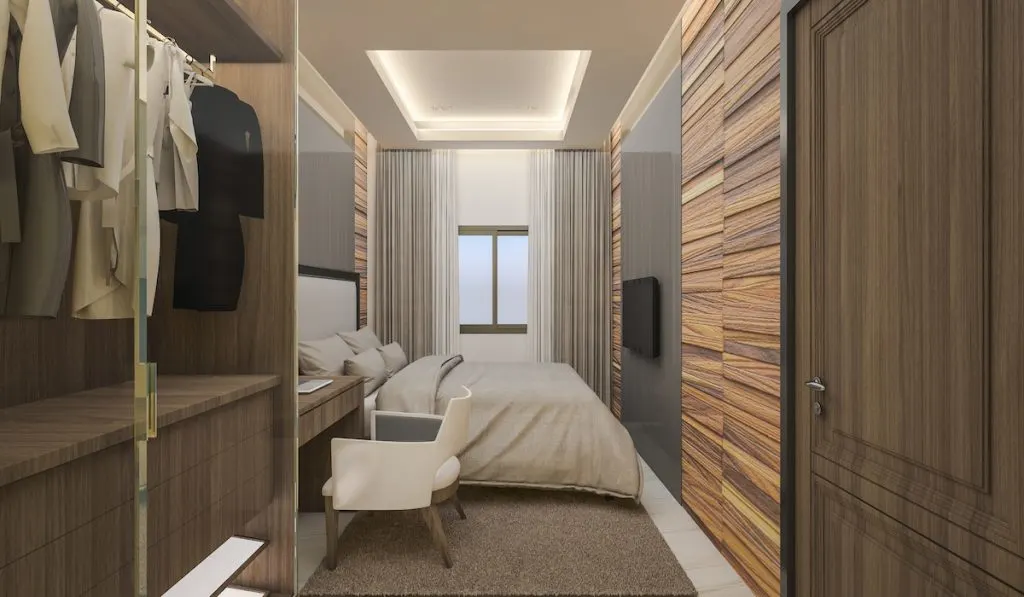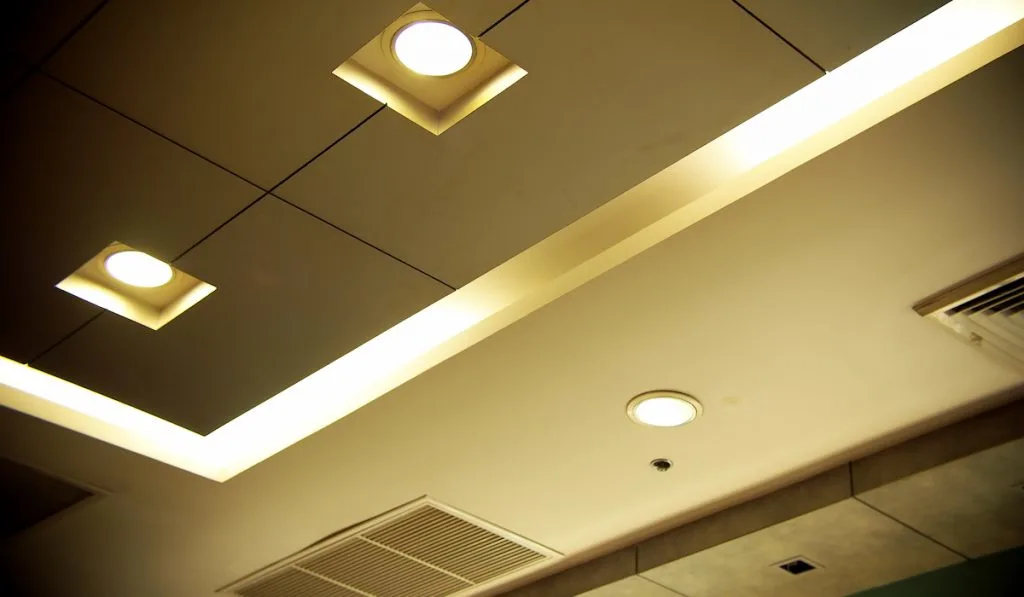If you’re looking for a home project, installing recessed lighting is a fantastic way to elevate your house and transform the look and feel of a room.
Most of the time, we see recessed lighting in living rooms, foyers, or dining areas.
With recessed lighting, you focus light in a specific area, so you can position light on top of tables, for example, or use them to highlight art pieces on the wall.
Should you put recessed lights in a bedroom?
Bedrooms with recessed lighting have become more popular in recent years. They offer ambient light, grading options, and other accents that make a bedroom more inviting and relaxing. It’s a big deal for people who use bedrooms as a place of refuge after a long day of work or to wind down before going to sleep.

With recessed lighting, you get more control over how bright or dim your bulbs are, so you can create a custom atmosphere specific to your preferences.
Done right, recessed lighting can make a bedroom look bigger and have several other benefits.
Let’s take a look at some of the advantages of installing recessed lighting in a bedroom and how much it costs to help you make the best decision for your home.
The Benefits of Recessed Lighting
Installing recessed lighting can completely change how a room looks. There are reasons why higher-end homes, luxury hotels, and other premium properties use recessed lighting so much.
It immediately gives a room a higher-end feel. People notice the extra effort it took to install the lighting system.
Recessed lighting gives property owners more control over light levels. You can configure specific lighting controls to different configurations. If you want to only turn on one or two lights to, for example, light up your bed while you read before going to sleep, that’s a possibility.
With recessed lights, your bedroom will also look bigger than it is. Recessed lights create what’s called the wall washing effect. Essentially, the recessed lighting hits the wall in a way that makes the room feel bigger.
To achieve this, your lights need to be positioned correctly. The distance between each light needs to be the same as the distance they are from the wall.
If you’re one of the many people who struggle with nighttime allergies, whether they be from dust mites or pollen during the springtime, recessed lights can combat this effect.
The trip around recessed lights and the casings prevent dust from collecting on and around the bulbs.
Recessed lights and their casings also protect the room from getting too hot or, in the event a bulb drops unexpectedly, etc., no one in the bedroom will get hurt.
These are just some of the benefits of recessed lighting. Done correctly, they make any room look amazing and give you more control over how your lights work.
The Size of the Recessed Lights Matter
A lot of people ask about what size recessed lights for the bedroom are the best. The main guiding principle with recessed lights is that the larger the room, the larger lights you can use.
Using large lights in a small bedroom is unnecessary and it will be harder to space them correctly. On the other hand, putting small lights in a larger room will make it difficult to get the level of brightness you need.
Smaller bedrooms will do better with 4-inch lights, and bigger bedrooms can get great results with 6-inch lights.

How to Layout Recessed Lights in a Bedroom
Here is some information on the best layout of recessed lighting based on how large the bedroom is.
- Large bedroom – In a large bedroom, the main issue is getting light in places you need it. You have more flexibility here, so it will require more careful planning to get things right.
For instance, you’re going to want lighting that covers your bed area, the entrance, and the bathroom, if you’ve got a master bath. After that, you should start thinking about areas of a large bedroom that you want to highlight.
If you have a vanity in a corner of the bedroom or a piece of art you love, then you can position the lights accordingly. - Medium bedroom – In a medium bedroom, you’ll still have some flexibility, but you’re going to be more thoughtful about light positions and size. It’s a good idea to either use a configuration of fewer 6-inch lights or a higher number of 4-inch lights.
Space them out evenly across the room for the best effect. - Small bedroom – Small bedrooms are where you have to be exact in your lighting layout. If you put the lights too close together or use large bulbs, then the room can be too bright and it will make the room feel smaller than it is.
Small bedrooms should use 4-inch recessed lights.

Cost Differences You Should Know About
What are the cost differences? Obviously, the more lights you install, the more it will cost you. Additionally, any technology features like remotes, dimmers, timers, etc., will add to your total cost.
If you’re thinking about installing recessed lighting in a bedroom, you should count on paying around $200 per light fixture. Add labor onto that and you’re probably paying $300 total per light.
Prices will vary based on things like the height of your ceiling and how complicated you want your light system to be.
If you need to install new electrical wiring to set up lights in new locations, it can cost thousands of dollars to rewire a room.
If you’re interested in finding out specifics on cost, you can call around to different contractors. They can quote you a general price range over the phone or send a tech out to your property for a walkthrough.
Conclusion
In the end, recessed light looks terrific in a bedroom and will elevate the space and add value to your property. It looks amazing and will make your bedroom even more of a relaxing space.
With some planning, you can have your bedroom lit up exactly the way you want it in no time.
